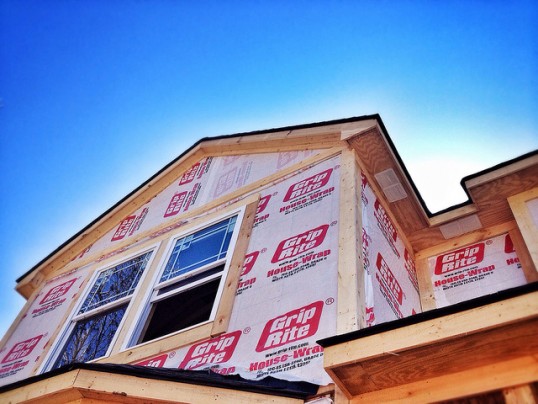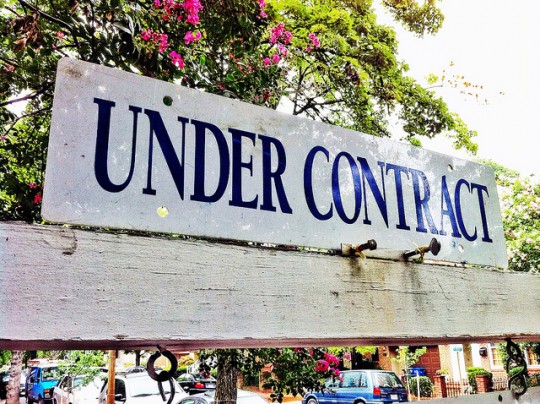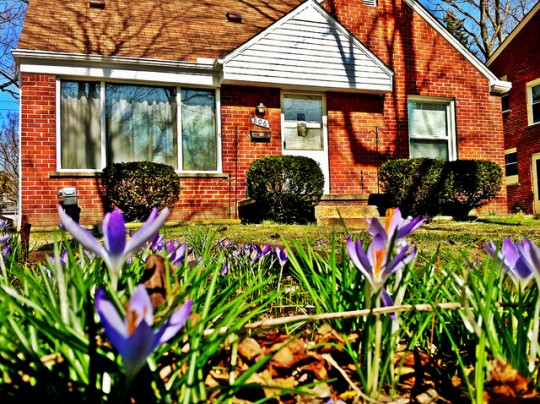This year’s home buyer is putting practicality before style when searching for a new home, according to a recent survey of builders from the National Association of Home Builders. Builders say the top features they’re likely to include in a new single-family home are walk-in closets, low-e windows, laundry rooms, and great rooms. Energy efficiency is a common theme, important to buyers due to the money it can save over the long term. Energy-Star rated appliances, programmable thermostats, and Energy-Star windows are all near the top of the list. Among the other features builders named, granite countertops, double sinks, and a central island are popular in new-home kitchens, while 9-foot ceilings, a front porch, outdoor lighting, and linen closets in the bathrooms are also features likely to be included in new houses this year. Kevin Kelly, NAHB’s chairman, said newly constructed homes can be built to suit the specific requirements of today’s buyer and now is a great time to consider purchasing a new home. More here.
Archive for March 2014
Pending Home Sales Flat But Stabilizing
Pending home sales are a forward-looking indicator of future existing-home sales based on the number of contracts to buy homes that are signed during the month. In February, contract signings slipped 0.8 percent, according to the National Association of Realtors. Lawrence Yun, NAR’s chief economist, said pending home sales have been little changed over the past three months, which indicates the market is stabilizing. Buyer traffic has increased modestly as the spring selling season begins and there is an expectation that some transactions that were delayed due to winter weather will now close. According to Yun, this suggests that the home sales slowdown may now be behind us. Regionally, the report was a mixed bag. Pending sales were up in the Midwest and West, while falling in the Northeast and South. Overall, contract signings are 10.5 percent below year-before levels. More here.
Demand For Loans To Buy Homes Increases
The Mortgage Bankers Association’s Weekly Applications Survey measures both purchase and refinance demand based on the number of people applying for home loans. The Purchase Index, which tracks the number of requests for loans to buy homes, is a good indicator of future home sales. Last week, the Purchase Index rose 3 percent from the week before, due to a 4 percent spike in conventional purchase applications. Government loan applications were virtually unchanged. Despite the rising demand to buy homes, a drop in refinance activity brought the Market Composite Index – a measure of overall demand – down 3.5 percent from the previous week. The results are evidence of an anticipated shift this year from a market dominated by refinance demand toward one with increased purchase activity. Also, average mortgage rates were up last week across all loan categories, including 30 and 15 year fixed-rate mortgages, conforming and jumbo loans, and FHA-backed loans. The MBA’s weekly survey has been conducted since 1990 and covers 75 percent of all retail residential mortgage applications. More here.
New Home Sales Fall In February
Sales of new single-family homes fell 3.3 percent in February, according to estimates released by the U.S. Census Bureau and the Department of Housing and Urban Development. With the drop, new home sales are now 1.1 percent below year-before levels. February’s decline was bigger than economists expected but matches recent economic and housing data showing slumping consumer confidence and slower sales and construction activity this winter. Harsh weather has been blamed for much of the downturn and February’s 32.4 percent sales plunge in the Northeast supports that theory. On the other hand, sales also fell in the South and West, where weather was less of a factor. Still, the housing market is expected to rebound as the weather warms and the sales season begins. The median sales price of new homes sold in February was $261,800; the average price was $317,500. At the current sales rate, there was a 5.2-month supply of new homes for sale at the end of the month. More here.
Spring Outlook Upbeat After Long Winter
Analysts from Fannie Mae’s Economic & Strategic Research Group are forecasting gains for the spring and summer season. After a slow start to the year, economic growth is expected to pick up in the second quarter and continue to build through the end of the year. Doug Duncan, Fannie Mae’s chief economist, said economic and housing growth will emerge from the tough winter weather and gain momentum into the spring and summer seasons. According to Duncan, fiscal and monetary policy jitters have waned and recent employment numbers came in at reasonable levels. Those improvements should help economic activity and boost the housing market. In fact, Fannie Mae expects a nearly 20 percent increase in housing starts this year and an improved market for newly built homes. The new home market faces less competition from foreclosures and distressed properties, Duncan said. And, with supply low, new home sales should continue to perform well. Generally, Fannie Mae expects the rise in home prices and mortgage rates to take a toll on sales and homebuilding, though they are forecasting modest gains for housing overall this year. More here.
Job Growth To Help Boost Home Sales
According to Freddie Mac’s U.S. Economic and Housing Market Outlook for March, home sales will continue to increase this year, despite higher mortgage rates and home prices. The forecast – which projects a 3 percent rise in sales for 2014 – is based on a belief that the job market and wage growth will both continue to improve. Frank Nothaft, Freddie Mac’s vice president and chief economist, said with more jobs, wage growth should continue to accelerate, giving Americans the income to buy homes and help sustain the emerging purchase market. Despite an unemployment rate that is still stubbornly high, Nothaft believes improvement in economic growth will help boost both construction and manufacturing employment, which are the sectors of the economy that have been slowest to recover. In fact, there are 1.5 million fewer construction jobs than there were in December 2007. Freddie Mac’s outlook also calls for moderate price increases and an almost 20 percent increase in new home construction this year. More here.
Home Sales Expected To Pick Up In Spring
The number of previously owned homes sold in February was virtually unchanged from the month before, according to data recently released by the National Association of Realtors. Total existing-home sales dropped just 0.4 percent from January and are now 7.1 percent below year-before levels. Lawrence Yun, NAR’s chief economist, said there were unusual weather disruptions across much of the country in February and that, along with constrained inventory and less favorable affordability conditions, led to a largely unchanged sales rate. But Yun expects sales to pick up over the months ahead, adding that some transactions are simply being delayed and, with an expected improvement in job creation, home sales should trend up modestly over the course of the year. In fact, in regions where winter weather wasn’t an issue, home sales have already risen. The West and South both saw sales increases in February, while the Midwest and Northeast experienced declines. Also, the median existing-home price for all housing types was $189,000, which is 9.1 percent above February 2013. More here.







